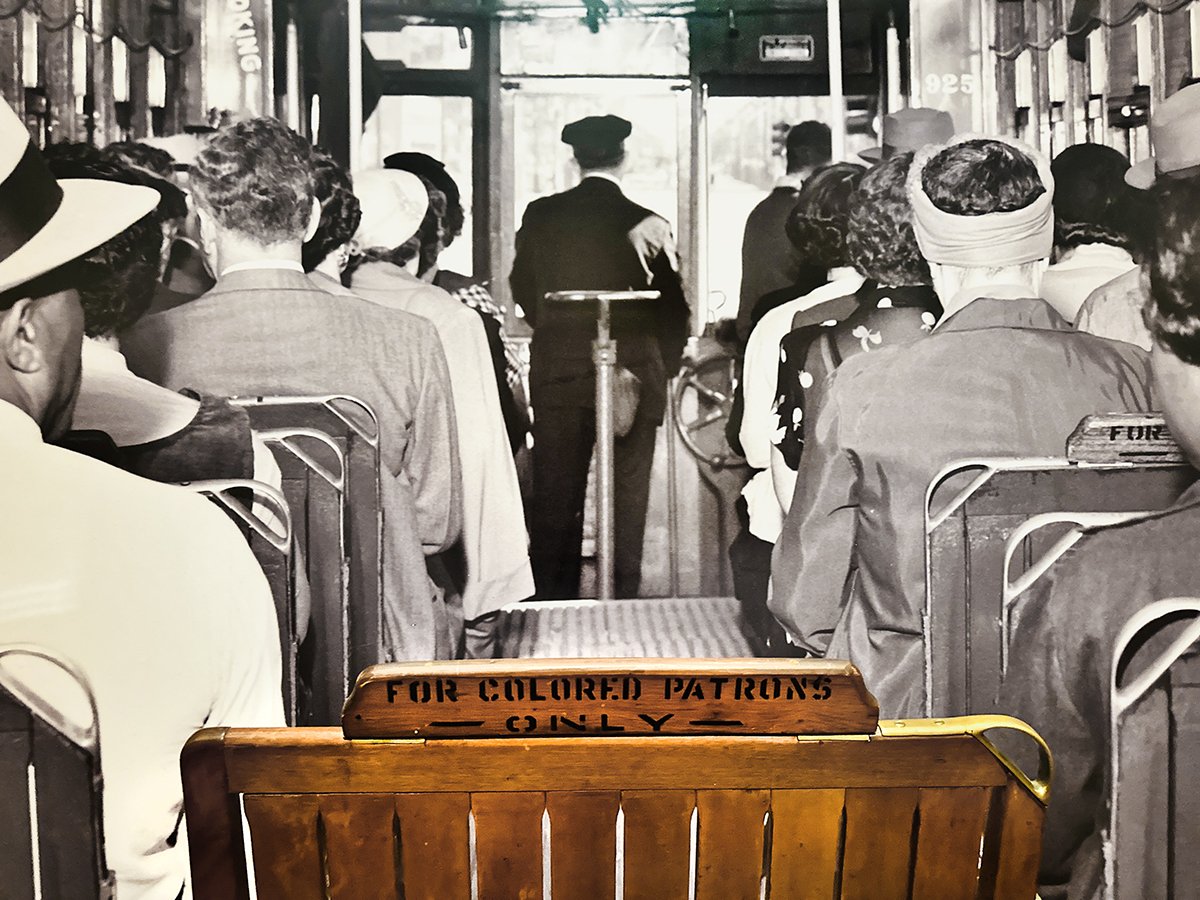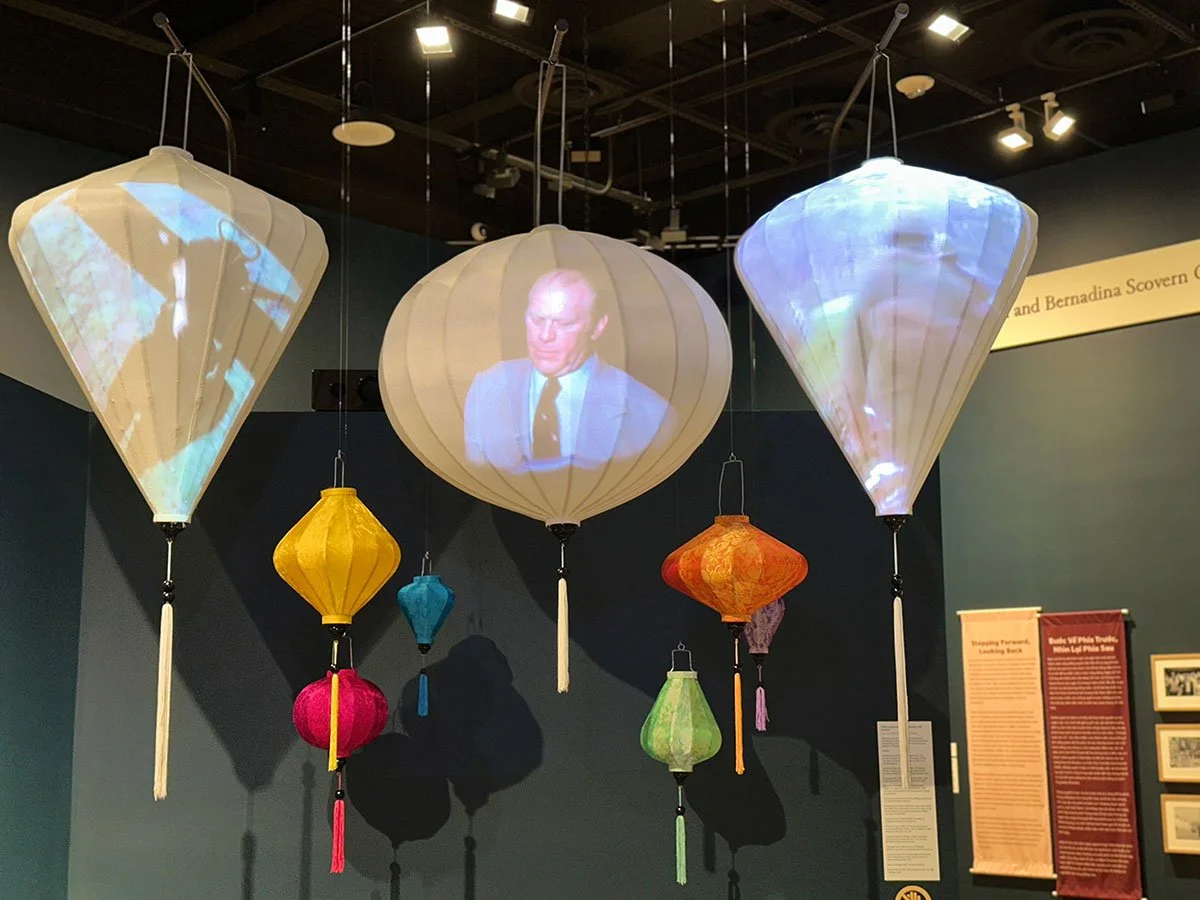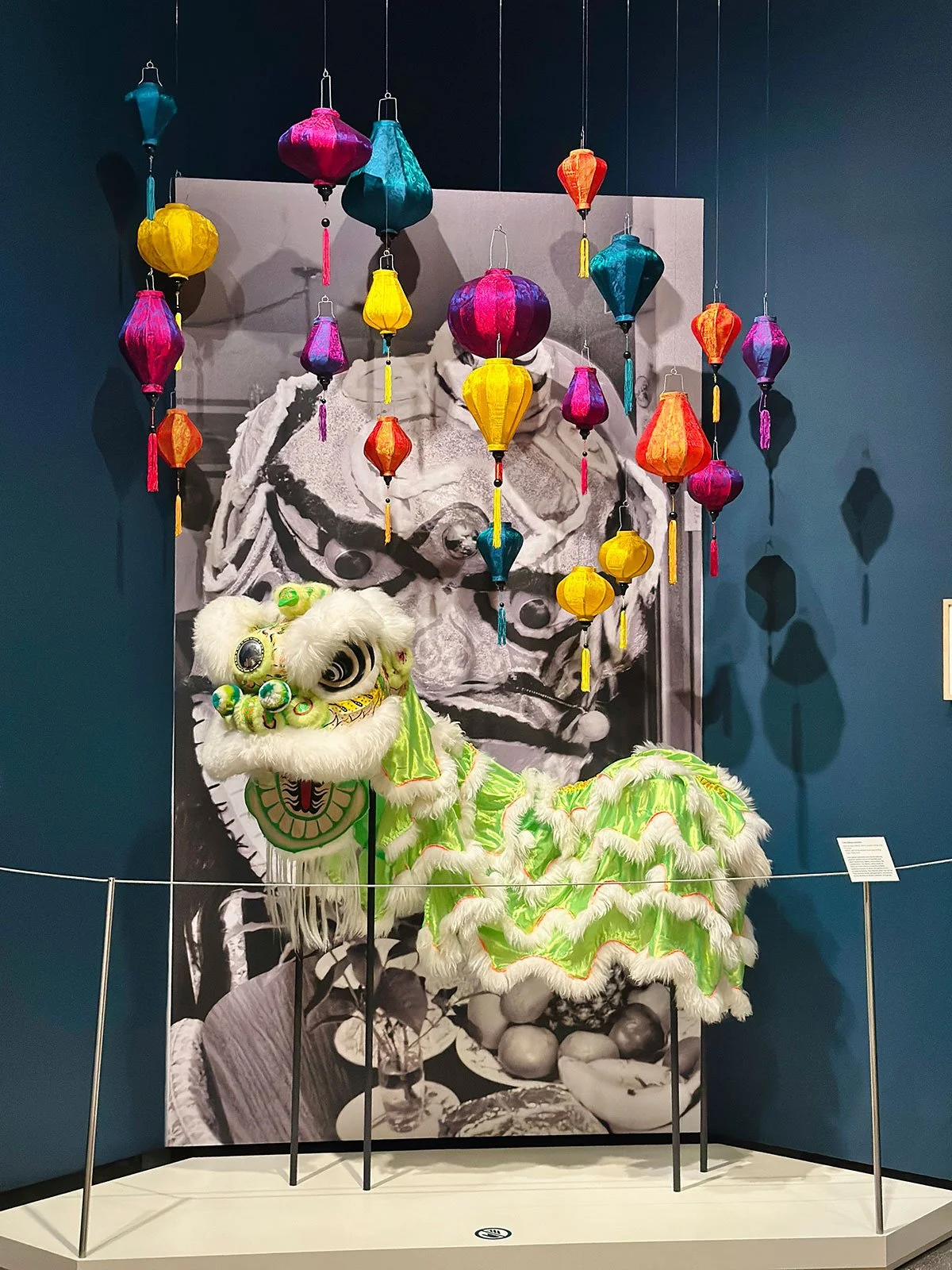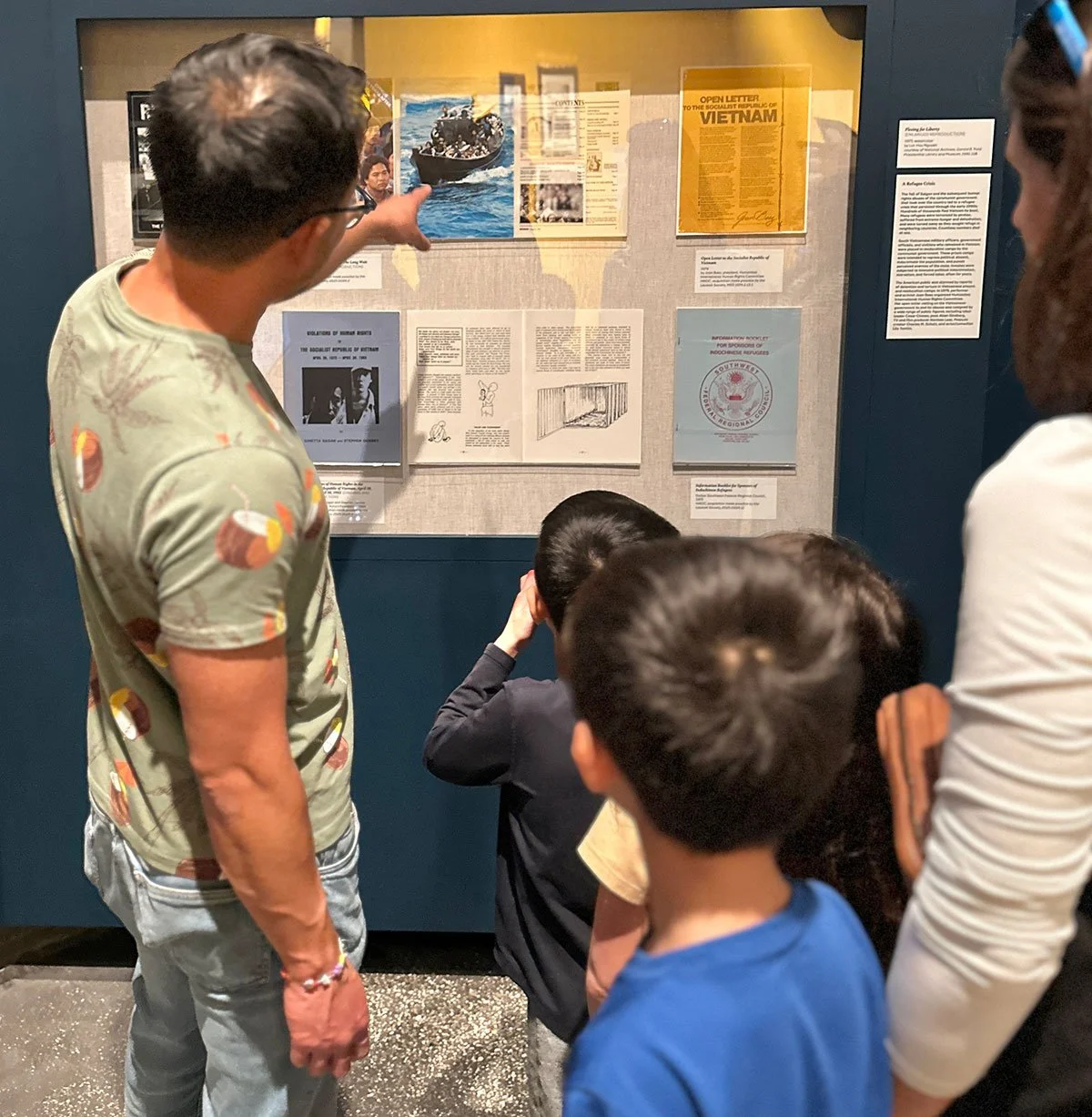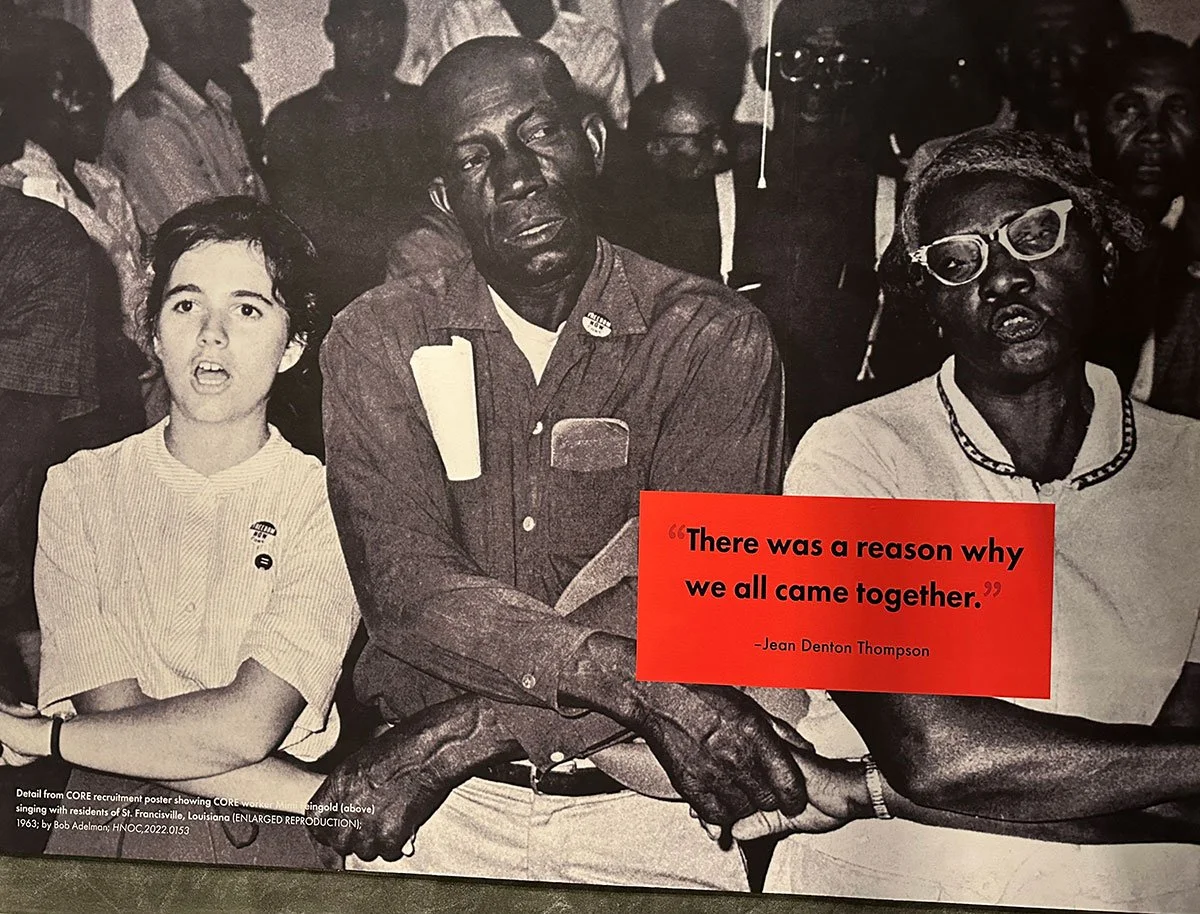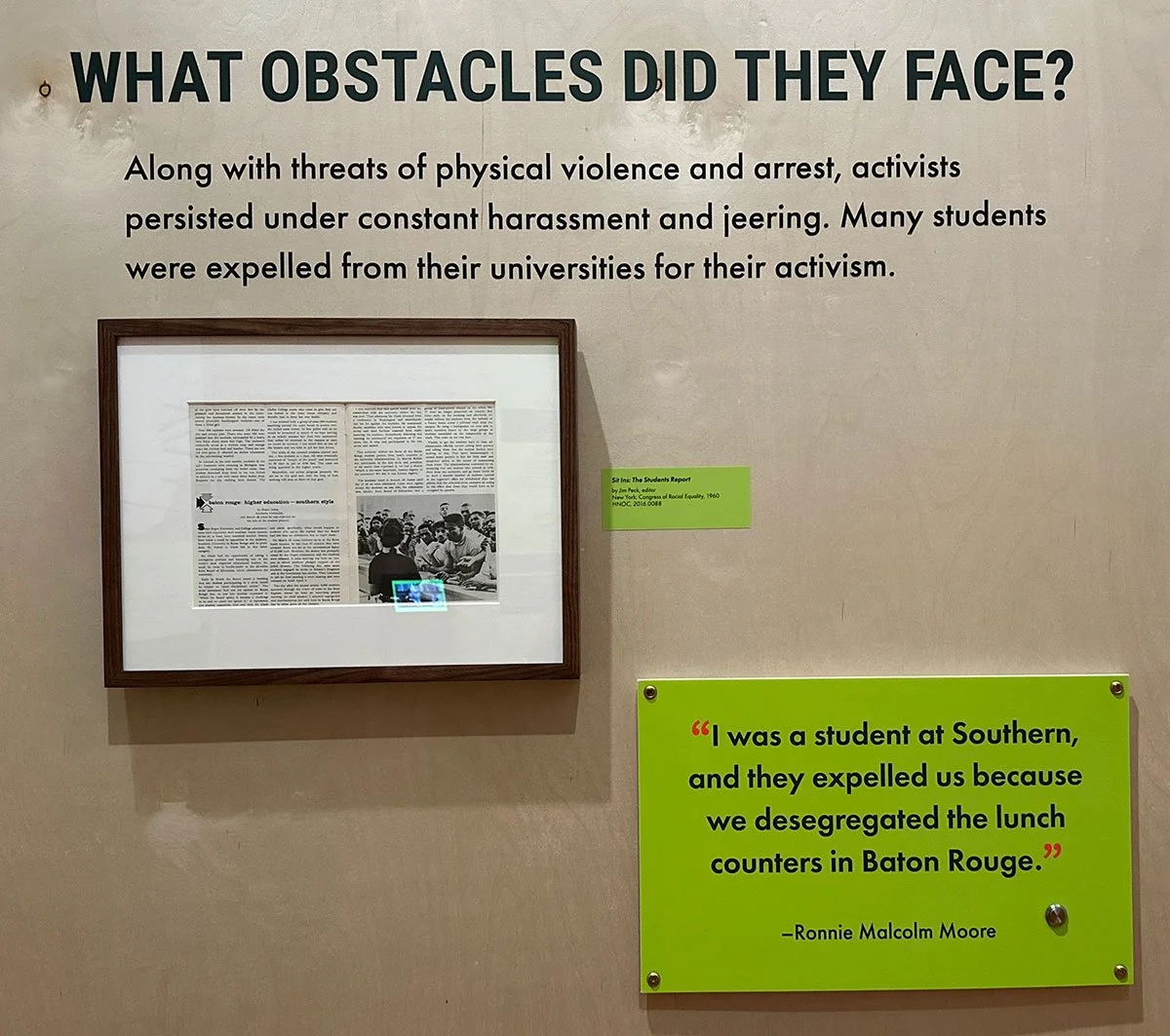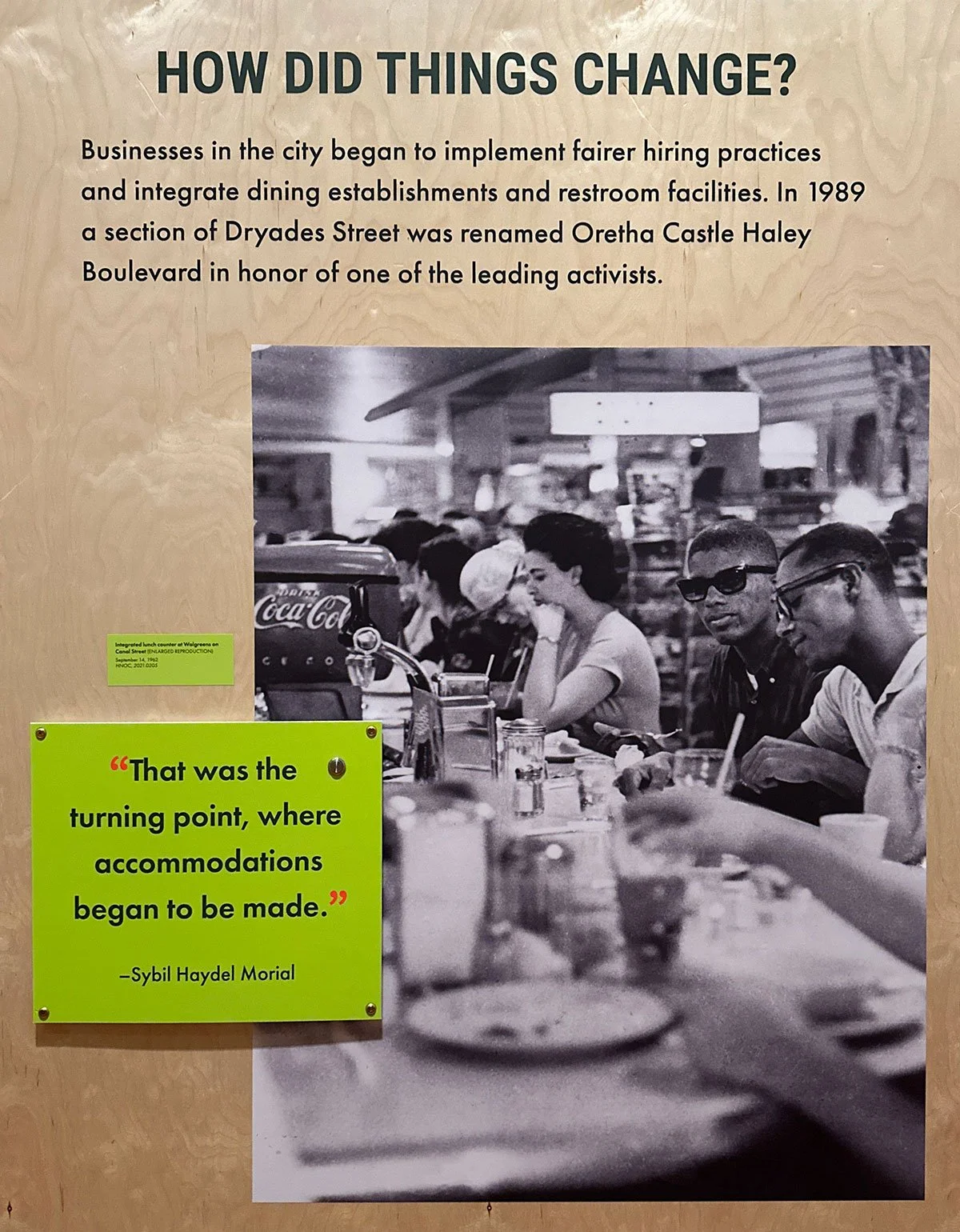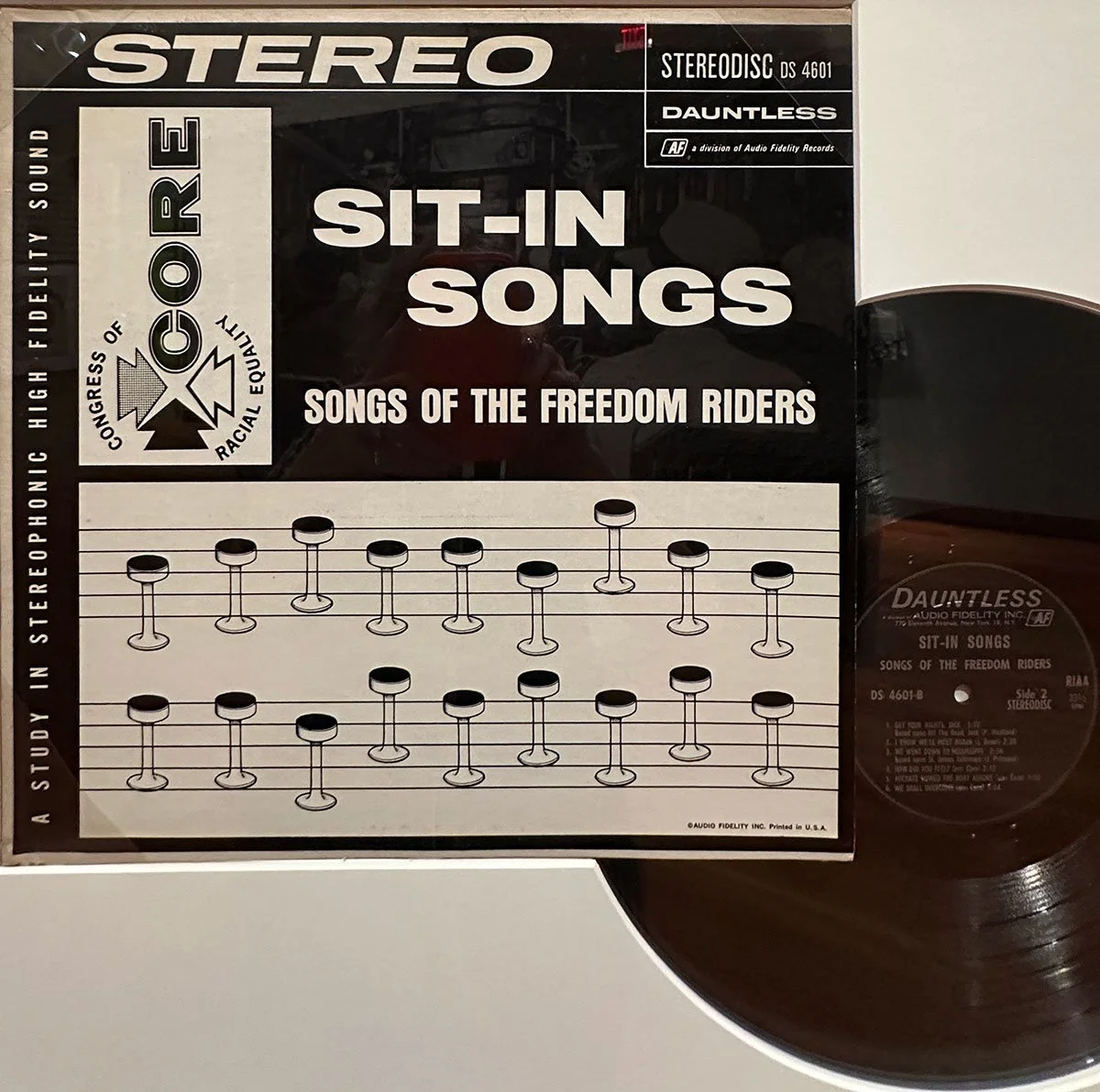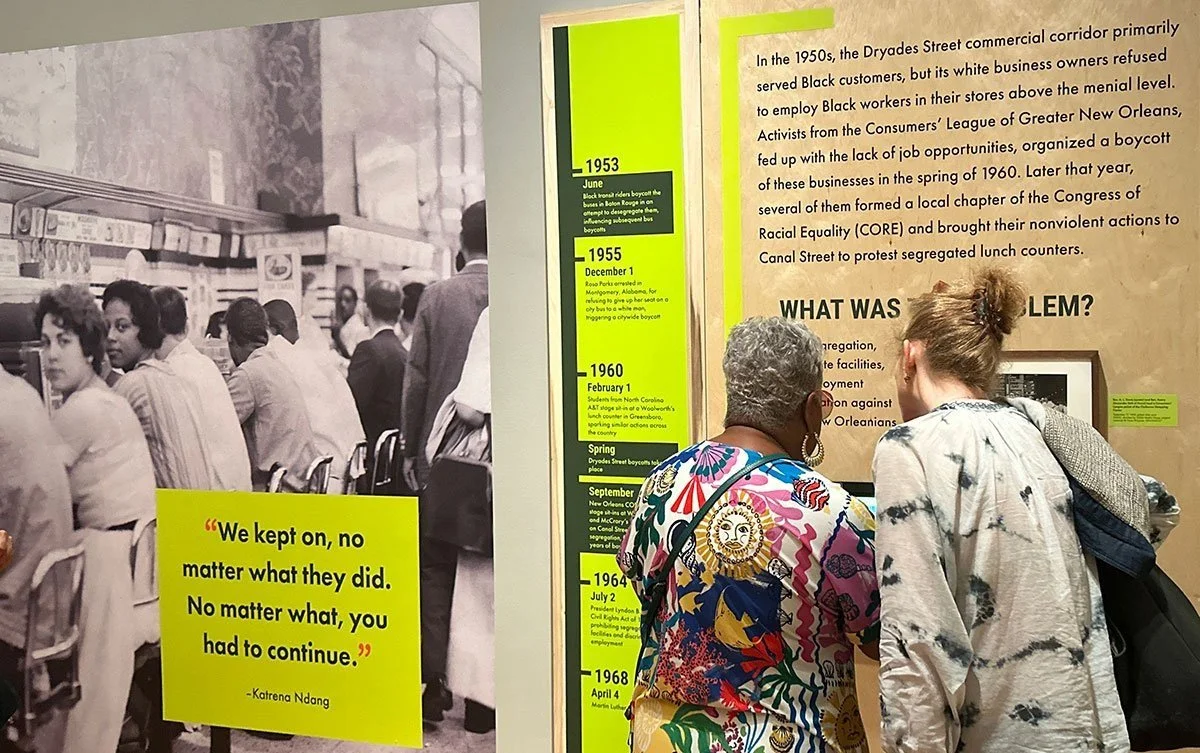Cross-Cultured at the Historic New Orleans Collection
A component of the powerful The Trail They Blazed exhibit at the Historic New Orleans Collection.
July 2025Two new mirroring exhibits reflect the city’s communal makeup through a decade of oral histories.
– by Doug Brantley
photos by Ellis Anderson“New Orleans is more, as I see it, than weathered bricks and cast-iron balconies,” said President Gerald R. Ford to a packed auditorium at Tulane University in April 1975.
“It is a state of mind, a melting pot that represents the very, very best of America’s evolution, an example of retention of a very special culture in a progressive environment of modern change.”
That determined retention of the city’s multifaceted culture—and its long legacy of resistance, resilience, and rebirth—is at the core of the concurrent Making It Home and The Trail They Blazed exhibits at the Historic New Orleans Collection.
Designed to both celebrate local diversity and increase inclusivity among the museum’s holdings, the complementary exhibitions, culled from first-hand oral accounts, each took a decade to compile and produce.
Making It Home will be on view until early October; The Trail They Blazed continues through June 6, 2026.
Making It Home: From Vietnam to New Orleans
A grainy clip from Ford’s historic Tulane address, announcing the end of the United States’ involvement in the Vietnam War, is featured in Making It Home, which marks 50 years since the fall of Saigon to communist forces and the mass exodus it led to.
A projection that includes a video clip of President Ford’s address at Tulane University in 1975 greet museum-goers at the entrance of the Making It Home exhibit.
A copy of the Indochina Migration and Refugee Assistance Act, which authorized the aid and resettlement of fleeing Vietnamese, Cambodians, and Laotians—and still informs U.S. immigration policy today—is also on display.
But it’s the perseverance among the million-plus refugees pushed out of the war-torn region, thousands of whom relocated to south Louisiana (largely settling in New Orleans East around the Versailles Arms apartment complex and Woodlawn Estates on the West Bank), that really resonates.
This larger-than-life image is a powerful focal point to the Making It Home exhibit.
Working with a translator, in 2015, curator Mark Cave began reaching out to and collecting personal accounts of senior members of Mary Queen of Vietnam Church in New Orleans East, as part of the HNOC’s broader Viet Chronicle project.
Over the years, he and his team amassed more than 75 hours of oral histories of first-generation immigrants, which guide the free exhibit’s narrative. An accompanying booklet delves further into subjects’ backstories and includes a QR code to access the Viet Chronicle’s full interviews.
“Most of the people we interviewed were born in small Catholic villages in North Vietnam,” Cave notes, “and had to flee their homes in 1954, when the Geneva Accords divided the country. Then moved to South Vietnam, only to have to flee again in 1975. So, they really spent their entire lives searching for a home.”
He points to Thom Thi Pham and her six small children, who, like many during the diaspora, escaped (along with her brother, Chinh) on a handmade boat to international waters in 1980. Her husband Hung Manh Vu was not so fortunate. Captured by communist authorities, he was imprisoned and never made it out of the country.
After three days at sea, the family was rescued by a West German humanitarian vessel and taken to a refugee camp in Singapore, where they remained for two months, sleeping on mats. Thom’s brother, Ly, who fled years earlier and was living in New Orleans East, sponsored the family to come stateside.
“He picked them up at the airport in this big red Buick,” Cave says, “which they had never seen anything like. Then they went to Popeyes for their first meal in New Orleans.”
Thom’s extended family scattered across the globe—Australia, Norway, Denmark, Germany, Texas. In 1991, a fractured faction that had settled in Germany was a watching a documentary on the war that showed “boat people” being rescued, when they realized they were witnessing their now-New Orleanian relatives’ journey.
That footage plays on a vintage console TV in a mock living room adorned with photos of the family taken just days after their arrival in the city, interspersed with images of visiting family members in Jackson Square, graduation photos, and group shots including Thom’s grandchildren.
Footage of Vietnamese people being rescued from boats plays on a vintage console TV in a mock living room
There’s room to add another to the wall: In late April, 43 members of the far-flung family, representing four generations, reunited in New Orleans to take in the Collection exhibit.
Due to their hastened departures, most refugees arrived in their new homelands with little more than the clothes on their backs, so there are few physical items from the period populating the exhibition.
To flesh things out, the HNOC acquired the portfolio of photographer Mark Sindler, who moved into the Versailles Arms apartments in 1978 and spent the next eight years documenting the city’s Vietnamese community as it quickly expanded and became more established.
Family, food, and faith (“They had their initial services in the laundry room at the Versailles Arms complex,” says Cave)—central to Vietnamese and south Louisiana culture alike—are all chronicled through Sindler’s lens, along with the community’s skilled fisherman, boat builders, and farmers.
Xenophobia and pushback from the Urban League, the fishing industry, and others are also touched on, along with assimilation and Louisiana-ization. Additionally, the exhibit nods to Vietnamese activism, including in the wake of Hurricane Katrina, which threatened to uproot the community all over again.
Making It Home curator Mark Cave (microphone right) leads a tour through the exhibit which includes many images by photographer Mark Sindler
At the opposite end of the exhibition space, across from the replica living room, is a homey kitchen table, at which visitors are encouraged to take a seat and spend quality time getting to know community members via two-minute, push-button recordings.
“You can understand why that first generation was so reluctant to share their stories,” acknowledges Cave. “Everyone had their own trauma from that time, and they just wanted to leave it—to live and be happy.”
The Trail They Blazed
While New Orleans may have seemed a virtual paradise to Vietnamese newcomers in the 1980s, it was anything but for Black residents during the Jim Crow era.
Also driven by oral histories, The Trail They Blazed is an outgrowth of the HNOC’s NOLA Resistance initiative, which was created to collect and preserve the reflections—and voices—of New Orleanians who helped bring about national change during the Civil Rights Movement of the 1950s-70s.
Originally introduced in 2023 as a traveling exhibition targeting local youth through area schools, libraries, and community centers, the expanded multimedia experience now encompasses the entirety of the museum’s third floor, where it will remain until early next summer.
Divided into seven sections—covering everything from activism and voter registration to school desegregation and boycotts—each is bordered by a historical marker charting national and local civil rights actions related to the subject.
Sections are then further broken down into subsections—“What Was the Problem?” “Who Stepped Up, and What Did They Do?” “What Obstacles Did They Face?” “How Did Things Change?”—that invite viewers to take a deeper dive.
There are also a variety of interactive elements designed to encourage engagement. Take the touchscreen Voter Registration Application test. No, really, take it, and you’ll understand why African Americans felt so disenfranchised during the time and so passionate about passing the Voters Rights Act in 1965.
Peppered throughout are archival photos, magazine features, and news reels of marches and protests, along with items from the museum’s permanent collection. Among them is a vinyl recording of “Sit-in Songs: Songs From the Freedom Riders” and a wooden streetcar bench with a marker reading “For colored patrons only” that could easily be removed and repositioned…to make room for more White passengers.
This eye-opening graph shows the impact of Jim Crow voting barriers. By 1940, only 897 Blacks out of more than 230k in the state of Louisiana were registered to vote.
Particularly moving is a grouping of Christmas cards from around the country addressed to the New Orleans Four: Leona Tate, Gail Etiéne, Tessie Prevost, and Ruby Bridges.
In November 1960, the 6-year-olds became the faces of the national desegregation movement, when they enrolled in two local elementary schools, where they were met with derision, racial slurs, and death threats from the parents of White students.
“Dear Little Girls,” reads one, “May God bless you and love you this Christmastide. You and your mommies and daddies are going through a bad time this year, but things are slowly improving for you, and by being so brave, you help all the other Negro boys and girls.
“Close your ears to the women who shout at you—they are fools—and remember that you have many friends all over America who are proud of you and your fine behavior. A very merry Christmas to you and your families.”
As with the tandem Making It Home exhibit, the most powerful parts of The Trails They Blazed are the personal accounts of pivotal players in the local Civil Rights Movement the exhibition was built around.
Oretha Castle Haley, Norman C. Francis, Sybil Haydel Morial, David J. Dennis, Doratha “Dodie” Smith-Simmons, and Raphael Cassimere Jr. are just a small sampling of the many featured on dozens of pull-quote placards placed throughout the exhibit.
But instead of just reading their words, guests can listen to the trailblazing activists and community leaders actually speak them with the mere touch of an embedded button.
To hear more of their stories and further explore New Orleans’ civil rights history, visit the HNOC’s NOLA Resistance site.
As Ford said in summation of his Tulane speech:
“Let the beacon light of the past shine forth from historic New Orleans…and from every other corner of this land to illuminate a boundless future for all Americans and a peace for all mankind.”

